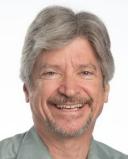Motivation
Political Connectness in the Classroom
How do we reach and teach those who are politically divided and overconfident?
Posted August 19, 2022 Reviewed by Ekua Hagan
Key points
- College students this year might be a bit more politically divided, pessimistic about the world, anxious, and overconfident than they have been.
- Their overconfidence might extend to their ability to think critically—to evaluate evidence for the claims they hear and share.
- Instructors face challenges in helping students understanding the biases and weaknesses in their own thinking and improving their skills.
Here we go again—another academic year. I try to help my students learn the professional skill of anticipation. So what am I anticipating? Mostly, I’m looking forward to yet another group of wonderful, nice, eager students who will make it fun and rewarding to stick around for another year.
But I am also aware of some of the challenges ahead. For example, a brand new poll by NBC News (Knott, 2022) found that among new college sophomores, “about 53 percent … said they would ‘probably not’ or ‘definitely not’ date someone who voted differently from them in the 2020 election.” I don’t remember being so opinionated when I was a college sophomore. And I certainly wouldn’t have wanted to decrease my chances for a date by half!
The survey also confirmed that students are experiencing high rates of anxiety and depression, and feel “less optimistic about the country and world than they were a year ago.” However, the survey found that “they have a rosy outlook about their own futures.” Perhaps we may want to focus on students’ personal goals and the connection between what they’re learning and their careers a little bit more than on the contributions they might make to society. Or, we could do a better job of merging those two levels of goals to reinforce the connection between personal success and societal values. With a politically polarized student population, the pedagogical challenges might include how they might work together on group projects. It has long been known that having people work on shared goals, in small groups, overcomes some prejudices.
We know that college helps students develop their ability to think critically (Huber & Kuncel, 2016)—a complex variety of skills that includes recognizing and analyzing evidence for claims. We might need to be more aware and more intentional about helping students focus on the process of thinking rather than what to think. What evidence should people use to assess the validity of claims? Loud voices? Similarity in attitudes? Systematically (scientifically) derived evidence? Personal whim? Income level? Celebrity?
Students do not come into the classroom as blank slates. They have ideas, beliefs, faiths, cynicism—and the same host of biases and inefficiencies in thinking that we all have (Kahneman, 2011). One of those biases is the Dunning-Kruger Effect, which Pennycook et al. (2017) define as “the observation that the incompetent are often ill-suited to recognize their incompetence.” In other words, people who are not good at something often don’t know that! They overestimate their abilities. It is a relatively new wrinkle on the time-honored human tendency toward overconfidence.
When we think about the Dunning-Kruger Effect, we often think of specific, concrete behaviors. For example, I think I’m a good trumpet player. But Pennycook et al. have demonstrated the effect in regard to analytic thinking skills and biases—what many call higher-order thinking, which includes critical thinking. Pennycook et al. found that people who were not as good at analytical thinking tended to overestimate their reasoning abilities. (By the way, those who were better at such thinking tended to underestimate their abilities.) The challenge, then, is to help students become better—more accurate—at assessing their own thinking skills. The better we are at understanding our weaknesses, the more likely we may be to improve.
It is a tall order to help students (a) become aware of the research on biases, (b) understand that they themselves are subject to these biases and imperfect thinking, and (c) take the next steps toward improving their thinking. These tasks present some interesting dilemmas. For example: Should I choose cases and examples that are politically charged, which would be more engaging for students (and, in some states, get me fired…)? Or should I concentrate more on less controversial issues that might allow students more practice at objectively collecting and weighing evidence?
How shall we deal with these multiple challenges—including students who are anxious, politically polarized, overconfident, etc.? In general, by being more intentional in the strategies we use, and engaging in inclusive and high-impact practices. Will we be successful in our efforts to educate students in this quasi-post-may-not-a-crisis-anymore-pandemic era? I’ll get back to you on that.
References
Huber, C. R. & Kuncel, N. R. (2016). Does college teach critical thinking? A meta-analysis. Review of Educational Research, 86, 431-468.
Kahneman, D. (2011). Thinking, fast and slow. New York, NY: Farrar, Straus and Giroux.
Knott, K. (2022, August 19). Poll: Class of 2025 politically divided. Inside Higher Education. Retrieved from https://www.insidehighered.com/quicktakes/2022/08/19/poll-class-2025-politically-divided
Pennycook, G., Ross, R. M., Koehler, D. J., & Fugelsang, J. A. (2017). Dunning-Kruger effects in reasoning: Theoretical implications of the failure to recognize incompetence. Psychonomic Bulletin & Review, 24, 1774-1784.


